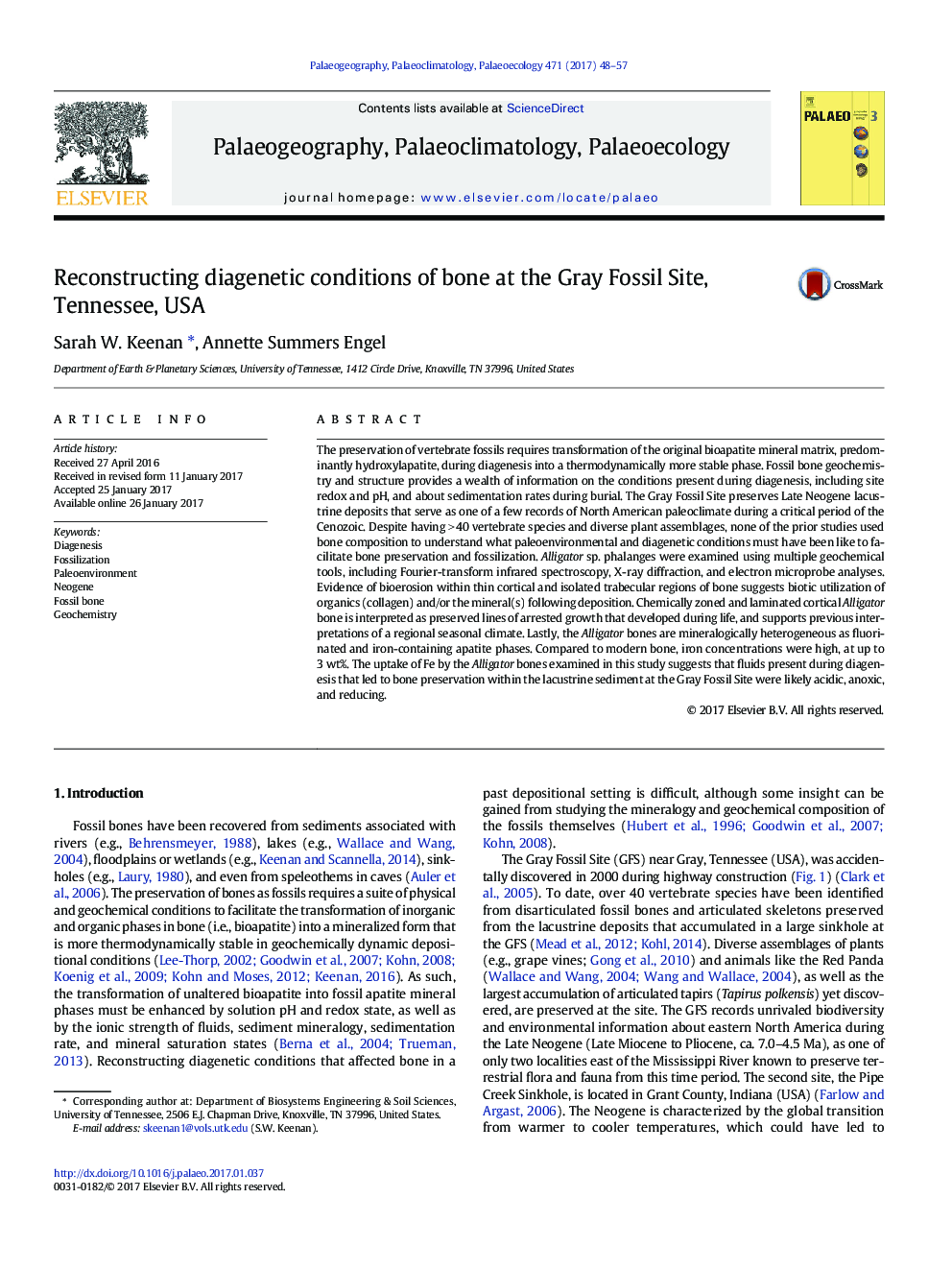| کد مقاله | کد نشریه | سال انتشار | مقاله انگلیسی | نسخه تمام متن |
|---|---|---|---|---|
| 5755926 | 1622121 | 2017 | 10 صفحه PDF | دانلود رایگان |
- Gray Fossil Site Alligator sp. bones are used to infer paleosinkhole geochemistry.
- Gray Fossil Site bones are Fe-enriched compared to modern bone.
- Bone diagenesis involved acidic, anoxic, and reducing fluids.
- Preserved lines of arrested growth in GFS alligator bone indicate seasonality.
The preservation of vertebrate fossils requires transformation of the original bioapatite mineral matrix, predominantly hydroxylapatite, during diagenesis into a thermodynamically more stable phase. Fossil bone geochemistry and structure provides a wealth of information on the conditions present during diagenesis, including site redox and pH, and about sedimentation rates during burial. The Gray Fossil Site preserves Late Neogene lacustrine deposits that serve as one of a few records of North American paleoclimate during a critical period of the Cenozoic. Despite having >Â 40 vertebrate species and diverse plant assemblages, none of the prior studies used bone composition to understand what paleoenvironmental and diagenetic conditions must have been like to facilitate bone preservation and fossilization. Alligator sp. phalanges were examined using multiple geochemical tools, including Fourier-transform infrared spectroscopy, X-ray diffraction, and electron microprobe analyses. Evidence of bioerosion within thin cortical and isolated trabecular regions of bone suggests biotic utilization of organics (collagen) and/or the mineral(s) following deposition. Chemically zoned and laminated cortical Alligator bone is interpreted as preserved lines of arrested growth that developed during life, and supports previous interpretations of a regional seasonal climate. Lastly, the Alligator bones are mineralogically heterogeneous as fluorinated and iron-containing apatite phases. Compared to modern bone, iron concentrations were high, at up to 3Â wt%. The uptake of Fe by the Alligator bones examined in this study suggests that fluids present during diagenesis that led to bone preservation within the lacustrine sediment at the Gray Fossil Site were likely acidic, anoxic, and reducing.
Journal: Palaeogeography, Palaeoclimatology, Palaeoecology - Volume 471, 1 April 2017, Pages 48-57
